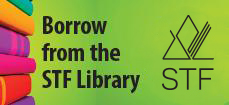Course Configurations
| (a) | Investigate and discuss what a stock market is and how it operates. |
| (b) | Describe common types of investments such as cash, fixed income and equity. |
| (c) | Investigate the differences between securities sold by prospectus (e.g., often listed) and securities sold by exemption (e.g., not freely tradable –the exempt market). |
| (d) | Distinguish between assets that appreciate and assets that depreciate relative to investment potential. |
| (e) | Analyze different investment options such as savings accounts, stocks, bonds, Guaranteed Investment Certificates (GICs), mutual funds, index funds, derivatives, Exchange Traded Funds (ETFs), real estate, collectibles and/or business ownership. |
| (f) | Apply the Rule of 72 to estimate the growth in value of various investments. |
| (g) | Research the advantages and disadvantages of a variety of ways to invest (e.g., through a registrant, through an online discount broker and daytrading). |
| (h) | Identify fees and commissions associated with various investment options. |
| (i) | Research where (e.g., prospectus, Fund Facts, Globe Fund, and SEDAR.com) to find fund, stock and general market data. |
| (j) | Research and monitor the performance of a variety of stocks over a period of time. |
| (k) | Examine cultural and/or religious attitudes and beliefs (e.g., Islamic views of interest and investment opportunities) towards investment income. |





This Canadian resource supports the Financial Literacy curriculum and provides information at a suitable introductory level. The resource is organized under six headings for a total of 15 modules.
Topics covered:
- Goals, Values and Decision-making
- Getting and Earning Money
- Spending Money and Taking Control
- Borrowing Money and Using Credit
- Saving and Investing Money
- Protecting Assets and Planning for the Future.
The resource includes:
- Student Guide, English or French, free online PDF version or hard copies can be ordered at a minimal fee
- Teacher's Guide, English or French, free online version


This Canadian textbook is divided into five parts:
- Planning Your Personal Finances
- Managing Your Personal Finances
- Insuring Your Assets
- Investing Your Financial Resources
- Controlling Your Financial Future
The resource contains case studies, concept checks, assignments and assessment examples.
There are four purchase options:
- eBook
- eBook only (online version of textbook)
- Connect
- eBook, homework, adaptive assignments and study tools
- Connect and print text
- eBook, homework, adaptive assignments and study tools
- printed textbook
- Print text
- printed textbook only

The Indigenous Edition of Money and Youth builds on the original resource from the Canadian Foundation for Economic Education, CFEE. Damon Johnston, President of the Aboriginal Council of Winnipeg, provided guidance rooted in traditional teachings and the Seven Sacred Laws. Vanessa Everett, CEO of Economic Development with the Keewatin Tribal Council, adapted the original version by Gary Rabbior of CFEE. Input from respected individuals across Turtle Island also helped shape this edition.
Topics covered:
- Goals, Values and Decision-making
- Getting and Earning Money
- Spending Money and Taking Control
- Borrowing Money and Using Credit
- Saving and Investing Money
- Protecting Assets and Planning for the Future.
The resource includes:
- Student Guide, English, free online PDF version or hard copies can be ordered at a minimal fee
- Teacher's Guide, English, free online version

